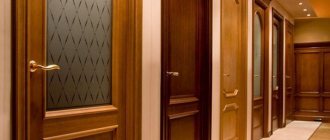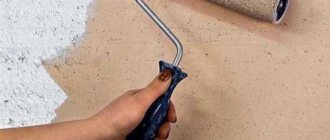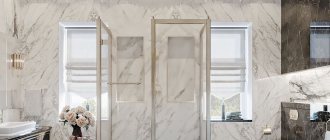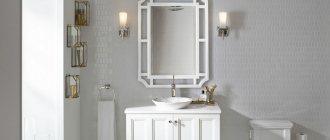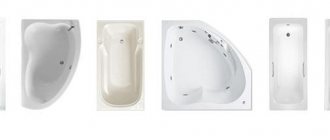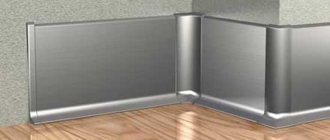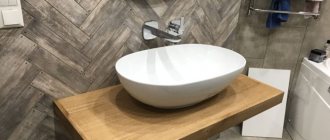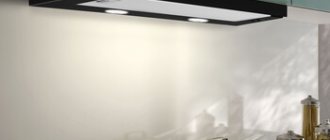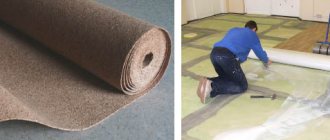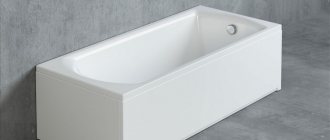They are considered an alternative to standard models. They are purchased for small plumbing units, freeing up space for built-in appliances or other needs. Our range:
Corner bathtub Riho Atlanta 140×140 BB7000500000000 RUB 61,162
RUR 76,452
Corner bathtub Riho Neo 140×140 BC3400500000000 RUB 38,566
48208 RUR
Corner bathtub Riho Neo 150×150 BC3500500000000 RUR 45,264
56580 rub.
Bathtub in a small shower room
In a small shower room, it is worth rationally planning the placement of all items. You should think through to the smallest detail where the bathtub will be located, whether it will be acrylic or cast iron, and perhaps the designs will be asymmetrical. When choosing a design for a small room, it is worth taking into account the supply of cold and hot water, where it will be supplied from, the drainage point, and the appearance of the bathtub itself. To simplify the installation of such an accessory, a simple triangular model, but decorated with a glass wall, is designed for convenience and privacy in the shower room. Asymmetrical options with glass can be replaced with banal curtains, an economical solution for many.
A large bathtub that will occupy half the space is unprofitable; you need to focus on placing all the necessary parts. The bathroom, if it is combined, should have a small bathtub, compactly located shelves, appliances, and furniture. The only disadvantage of a small bathtub may be its cost compared to standard sizes. So, you can choose from products measuring 90 by 90 centimeters, or seated structures, or possibly asymmetrical ones, but the main thing about them is their depth, which can be from 40 to 60 centimeters.
Kinds
If you choose acrylic, you need to follow the rules:
- white color will visually expand the space;
- it must be deep;
- stop choosing is on a triangular corner, without any frills;
- choose the correct installation angle to adjust the water supply and drainage.
Types of corner baths
Corner baths are divided into symmetrical and asymmetrical. The size of the bowl also depends on the type, that is, one or another model may have sides of the same or different lengths.
It is extremely important to focus on which direction the structure is located. Before you buy a product, you should figure out which bathtub configuration is best suited for your existing space.
Symmetrical
Such products, as a rule, easily fit into spacious rooms. These models are distinguished by their regular shape and are usually used in classic interiors or where it is important to maintain geometricity. The most common sizes of such bowls are: 156*156, 150*150, 140*140, 135*135, 130*130 and 125*125 cm, where the first dimension is the width and the second is the height. Thus, we can conclude that for any size bathroom you can choose a suitable bowl. So, for Khrushchev apartments, small ones will be optimal, and for spacious bathrooms in country houses and large apartments, even the largest ones can be used.
Depending on the manufacturer, the sizes of symmetrical bathtubs may vary. Eg:
Important! Symmetrical models of corner baths look presentable and provide maximum comfort during use.
Within the framework of this article, it is necessary to pay attention to the material from which bathtubs of this type are made. For example, steel bathtubs are more suitable for small bathrooms and are affordable. There are also cast iron options on sale today, but such models are massive, so they are installed in large bathrooms, since installation will be problematic in a small space. A universal option that combines high quality and external characteristics with an attractive price is an acrylic bathtub, which is made in various shapes and sizes.
Asymmetrical
Thanks to modern material – acrylic and the latest methods of its processing, bathtubs can now be made in any configuration. Such bowls look very impressive and become a decoration for the bathroom. In addition, asymmetrical bathtubs allow you to completely relax during water treatments.
At the moment, the range of sizes of asymmetrical bathtubs is so large that any bathroom can be equipped with a bowl of this type. Such a wide range opens up a lot of possibilities for bathroom designers. So, the most common sizes are: 185x105, 180x130, 175x105, 175x100, 170x105, 170x100, 160x125, 160x100, 160x80, 160x75, 150x105, 150x100, 150x75, 140x105, 100x90. 185x105.
Other dimensions
In addition to the width of the bathtub, you should definitely take into account its height and depth in order to create not only a beautiful, but also a functional interior that is practical.
Thus, the standard height of the bathtub above the floor is 60 cm. This is the optimal level for any average person to easily step over the side of the bowl. The height of 60 cm is suitable for both children and the elderly. But some deviations are still possible and quite acceptable. It all depends on the taste of the owner of the house and the appearance of the bath, which should fit the overall design of the bathroom. So, the lower the bathtub, the more unique it looks, but in a high place it is more comfortable to take water procedures, and there will always be free access to communications.
An incorrectly selected bathtub height may not work in favor of the owner. Such a bathtub simply will not decorate the interior of the bathroom and will be inconvenient to use.
Advice! If you want the bathtub to be high, then it is best to install it on a podium, of course, if free space allows.
An important indicator is the depth, which largely determines the ease of use of the bathroom. The classic type of bathroom depth is 60–80 cm. This choice is made by people of average height, for whom it is much more convenient to step over just such a side.
No less popular are washing bowls, which are spacious and about 40–50 cm deep. In such a bath you can relax as much as possible. What is important is that these models are best suited for families with small children who can safely take water procedures.
For those who prefer deep baths, manufacturers have also done their best. In stores you can find products with sides up to 90 cm high, which are made flat to avoid a bulky appearance. Such baths are suitable for tall people, but short people will not be very comfortable in them.
It is also worth noting that the depth of the bathtub may vary depending on the material of its manufacture. So, for a cast iron bath, due to the fact that it can withstand high loads, the depth should be greater. A corner bathtub made of acrylic, as a rule, is not made too deep, since this material is less resistant to various types of loads.
Advantages of corner models
A font installed in the corner of a room differs from others in its functional qualities, which allow us to talk about its advantages:
- The small design, installed in the corner, allows a tall person to relax and swim while reclining. Comfort is an important indicator when choosing.
- The advantages include the ergonomics of the model. Even a large bathtub installed in the corner of the room saves space. At the same time, access to other interior items is free and uncluttered.
- A shower room with such a font always looks fashionable, while comfort remains a priority.
- The corner design is equipped with additional options. Their fullness is superior to other models. Lighting, hydromassage, audio system – these are not all the additional functionality. Manufacturers equip the bowl with armrests, a headrest, and handles. All this increases comfort.
It is possible to organize the space in the room at your own discretion if the installation of the mixer and drain is moved to a place chosen by the owners. Making your wish come true is real.
How to choose a corner bath
The appearance of the corner font can be compared to a revolutionary leap in the production of plumbing fixtures. And its variety of forms and contents only increased the number of fans. The opportunity to install the structure yourself is attractive, and for housewives it is important that there are no difficulties in caring for it. Manufacturers have developed left-sided and right-sided corner asymmetrical bathtubs.
On the plumbing market today there is a large selection of models mounted in the corner of the room. You can choose the font that suits the dimensions and interior of your room. When choosing corner plumbing, you should first study a number of questions:
- Room parameters. In multi-storey buildings, the bathroom size is mostly small and installing a font in the corner transforms the atmosphere and adds comfort. If in a small room a rectangular bathtub eats up space, then a corner bathtub will only add centimeters for free movement in the room. The model belongs to ergonomic plumbing fixtures.
The larger the room, the larger the bowl you can install. If there is little space in the room, but there are a lot of interior items, then a compact model is chosen.
- Dimensions of a corner bath. The length of the bowl is chosen at the discretion of the consumer. Lengths from 1.3 m to 1.6 m are considered in demand. If one person can swim in a font with a length of 1.3 m, then with parameters from 1.6 m and more two people can fit. The volume of the corner bowl exceeds that of other rectangular and oval-shaped models. To speed up the filling of the font with water, it is recommended to install built-in cascade mixers.
The level of comfort for family members bathing in the bath depends on the depth of the bowl. Therefore, the depth indicator also affects the price.
Manufacturers set standard depth dimensions in the range from 0.6 to 0.8 m. This design depth is convenient for a family where everyone is of average height.
The depth of the bowl is selected according to the height of the tallest member of the family.
| Bowl depth indicator, m | Human height, m |
| from 0.40 to 0.50 m | does not exceed 1.6 m |
| 0.50 m | from 1.60 to 1.70 m |
| 0.60 m | from 1.70 to 1.80 m |
| from 0.70 to 0.80 m | from 1.8 to 1.90 m |
Corner bathtubs with a depth of 0.40 to 0.50 m and a spacious bowl are loved by families with small children. For a font with a depth of 0.9 m, manufacturers make gently sloping side walls to reduce the feeling of bulkiness of the structure.
The maximum depth for each model is different and depends on the material. Since cast iron can withstand heavy loads, the structure can have greater depth. Acrylic models are not made deep.
Installation Disadvantages
- Installing a corner structure automatically implies an increase in the cost of decorating the room. At the same time, the font itself costs more than standard ones.
- Large plumbing fixtures are difficult to clean and the housewife is forced to climb into it in order to completely cover the entire volume.
- To fill even a small bowl you will need 200 liters of liquid. The volume of liquid reaches 400 liters.
- For acrylic bathtubs (the majority of them), care products should not be abrasives. Do not use hard sponges. Otherwise, scratches will appear on the surface.
What to look for when choosing a product
When going shopping for a new corner bathtub, it is important to prepare and know what to focus on when choosing.
- Dimensions. Depending on the size of the shower room and the planned number of people who will take a bath at the same time, it is important to understand in advance which option is needed, single or double. The length of a double bathtub reaches 2 meters, and the depth of the bowl is from 40 to 70 cm.
- Form. It is also selected depending on the area of the room. Asymmetrical ones are easier to fit into a small room.
- Wall thickness. This applies to acrylic models. Thin walls will bend under heavy load, so during installation they will have to be reinforced with a metal frame.
- Additional accessories. These are handles on the walls, a headrest or jets for hydromassage. Will the included mixer fit or will it be purchased separately? All these additional elements can be completed with the bath, but then the price will increase significantly.
- Material. The cast iron model is durable, but very heavy. Plastic is cheap, but quickly loses its appearance. Steel is noisy. Acrylic is lightweight, there is a large selection of shapes, but the walls must be thick.
- Right angle location. Please note that a right- or left-handed bowl is required for installation in a specific bathroom. It also matters where the drain hole is located.
Asymmetrical and symmetrical
Corner baths, asymmetrical and symmetrical, can be used in a bathroom regardless of its size.
Today there is a huge range of corner bathtubs in sizes, its standard length is 1.85 meters.
A triangular bathtub will also help you use one corner of it for any interior elements of the room. For a small bathroom, a triangular bathtub will be an excellent solution to the problem of small space, as it can significantly save space.
A large number of corner bath models are equipped with built-in shelves and places for storing personal hygiene products, which helps optimize the space of the room and make it as functional and comfortable as possible.
Related article: How to take and read electricity meter readings
The sizes of these bathtubs vary from 1.20 to 1.85 meters, which makes it possible to choose the option that best suits your bathroom. Very useful is the fact that they can be either left-handed or right-handed, and this will greatly help with installation and connection.
Different manufacturers offer their own size range of bathtubs. For example, the Ravak company produces symmetrical bathtubs: 1.3x1.3 m, 1.4x1.4 m, 1.5x1.5 m, a number of asymmetric ones are much larger: 1.7x1.05 m, 1.4x1.05 m, 1. 85x1.05 m, 1.5x1.0 m, 1.6x1.05 m, 1.5x1.05 m, 1.7x1.1 m, 1.5x0.75 m and 1.6x0.75 m.
The variety of sizes allows you to install a triangular bathtub in a room of almost any size and without sacrificing the pleasure of taking a bath in favor of installing a shower stall.
Corner bath set
The standard corner bathtub model includes the following items:
- a drain grid that is attached to the sealant and additionally secured with a bolt, onto which a sealing and pressure ring is placed from below;
- tee of the drainage system, which is connected to the clamping ring in such a way as to ensure the direction of the side drain to the sewer pipe;
- overflow grid;
- an overflow tube, one end of which is connected by a grid, and the other by a tee;
- support legs for installing the bathtub on the floor and hooks for attaching the product to the wall;
All communications elements are hidden under a decorative apron, which is placed on the frame after installation.
- handrails for safe entry and exit from the bathroom;
- a siphon in the form of a pipe, which serves as a water seal;
- bathtub faucet that can be installed on the side or wall of the bathroom.
Dimensions of corner baths
When every centimeter counts in a small bathroom, you need to choose a model of optimal dimensions. It’s good if the bath takes up no more than 2/3 of the room’s area.
If you need to save space for a sink and washing machine, an asymmetrical model would be an ideal option. The sink can be placed directly above its narrow part, then a washing machine will stand quite ergonomically next to it.
Thus, you first need to study the dimensions of the models and take measurements of the space for installing a corner bathtub:
- the sizes of symmetrical bowls range from 125 x 125 cm to 160 x 160 cm;
- the dimensions of asymmetrical corner baths vary from 140 x 76 cm to 190 x 90 (Perseus bath).
Having decided on the model of a corner bathtub, it makes sense to inquire about the finishing features of the room.
Additional functions
The hydromassage function is a sought-after attribute of a corner bath. A mixture of water and air is supplied through built-in nozzles, providing a restorative and healing effect . The massage nozzle is concentrated to treat the legs and back area. Some models have the ability to expose both zones to water at the same time. The hydromassage system is controlled by a control panel built into the bathtub body. The mechanism is reliably sealed against water ingress. The corner whirlpool bath is programmed for various operating modes with options for spray intensity and frequency.
Expensive models are coated with antibacterial compounds and equipped with a self-cleaning coating. Its only drawback is its high sensitivity to chips and scratches. The panel is produced in color, and the sanitary fittings can be chosen to match the overall style of the shower room.
Interior nuances
A corner bath is an element that must be installed in a bathroom during a major renovation. Otherwise, its installation will be almost impossible.
Modern corner models can be combined with any of the finishing materials, but it is worth choosing a product so that it stands out against the general background and favorably emphasizes all the advantages of the bathroom.
Due to the color of the bathtub, you can even visually enlarge the room. This can be done easily if you install a corner model in beige, white, green or light blue. Due to the light shade, the bathtub will stand out less and will practically merge with the walls that match the color. The bowl must be combined with the style of the bathroom. So, for example, installing a classic bathtub would not be appropriate in the high-tech direction.
Form selection
The standard dimensions of a product that will be mounted in a corner are 150-160 cm, although in stores you can also find models that deviate from these parameters.
The compactness of corner furniture for a shower room allows you to take into account the layout of the room, but requires special design of sewer pipes. The entrance and exit should also not be cluttered.
The model range produced by manufacturers in terms of size, shape and depth of the bowl varies within fairly wide limits. They largely depend on the material used. Two types of construction can be distinguished by shape:
Products with the correct symmetrical shape. They are larger in size, provide comfort, and have a very attractive appearance. But at the same time they take up more space.
Asymmetrical designs in which the individual elements of the bowl have different sizes. They are original in appearance, but their main advantage is their great compactness and the ability to fit into a small shower room.
What material are corner bathtubs made of?
These devices can be made of steel, cast iron or acrylic. The first option is among the most economical, and therefore is aimed at small-sized rooms.
Cast iron products, on the contrary, are more massive.
But acrylic samples are universal. These features are clearly visible in the photo of the corner bathtub, which are presented in our article.
Shape and size
Manufacturers produce a wide range of corner bathtubs, which are distinguished by size, depth and bowl shape. Most often, the dimensions of the product depend on the material from which it is made. The products are shaped like a petal, a trimmed drop, or an open fan, but there are also more original options, consisting of 2 bowls. There are 2 types of corner baths:
- Symmetrical. Such products have a regular, symmetrical shape. The large sizes of symmetrical models give them a presentable appearance and provide maximum comfort, but are an obstacle to installation if the bathroom is small
Corner symmetrical bath - Asymmetrical. Such models have an asymmetrical shape, that is, parts of one bowl differ in size and configuration. The reason for their popularity lies not so much in the originality of the design, but in functionality and ergonomics, which allows you to install a bath that is easy to use, even if the size of the room does not allow you to allocate a lot of space for it.
Corner asymmetrical bath
Important! Steel products belong to the economy class, so most corner-shaped bathtubs made of this material are intended for installation in small rooms. Cast iron products, on the contrary, are quite expensive; due to their massiveness, they are suitable only for large rooms. A universal option is acrylic bathtubs, as their size and shape are suitable for most cases.
Materials
Cast iron
This material provides a service life of 20 years or more. The main disadvantage is the significant mass of the bath. Cast iron bathtubs are rare; this fact can be explained by the peculiarities of production. And the price of the final product is quite high.
It is impossible to create hydromassage in such plumbing, and during installation it is necessary to ensure grounding.
Steel
Steel plumbing belongs to the budget category of goods, and the demand for such products is low. The service life is 10-15 years. Corner models for steel plumbing are rare.
Acrylic
This option is economical and has a large assortment. Thanks to the properties of the material, there are no boundaries for product design - regarding color, shape and dimensions. Usually the kit includes special curtains, headrests, handles and hydromassage systems. The service life of acrylic plumbing fixtures is about 10-15 years, depending on the conditions of use and care. After maintenance, the acrylic surface will look like new.
Before purchasing, carefully analyze the market for similar products. Pay attention to the manufacturers: Ravak, Paa, Doctor Jet, Kolpa, Apollo, Aqua, Balteco, Spring, BluBleu, Hartia, Teiko, Albatros, Duravit, Gruppo Treesse, Kolo, Inspiration.
Materials for corner baths
Currently, corner baths are produced in three versions, depending on the material.
Acrylic
The most common material for corner bathtubs is acrylic. The ease of manufacture and plastic finished material allows us to produce acrylic bathtubs of absolutely any shape and size, which allows us to please the taste of almost all customers.
Acrylic bathtubs are not at all labor-intensive to install. Even one person can cope. Acrylic bathtubs are relatively inexpensive, and their service life reaches 15 years.
Steel
Bathtubs made of steel are considered durable and reliable. They are the cheapest and are in great demand, although they are rarely produced in an angular form.
The main disadvantage is their good thermal conductivity, which does not allow you to enjoy hot water for a long time. The service life of steel bathtubs is 15 years.
Cast iron
Both corner and regular, cast iron bathtubs are durable and reliable. They keep water hot longer and require little effort to install. They all just stand on their feet.
But delivery will require the strength of several people, because cast iron bathtubs are very heavy. Their weight can reach 130 kg. Another disadvantage of corner cast iron baths is their cost. The production of such baths is a complex process, and not all factories have special equipment for their manufacture.
Thus, corner cast iron bathtubs are rare and are more expensive than steel and acrylic bathtubs. But all this can cover their service life - about twenty years.
Made from natural stone
Such bathtubs are made from marble or granite blocks. Using special equipment, a bowl is cut out of solid stone, which is a natural bathtub.
There are also artificial marble baths, when marble chips are used instead of solid stone. It is mixed with various substances, including acrylic resins, dyes, hardeners and others.
The advantages of such a bathtub are not only the beauty of natural stone, but also resistance to bacterial penetration, long-term temperature maintenance and incredible strength even with thin walls.
A great feature of corner baths is the possibility of taking a bath together. There are special models equipped with headrests for two people. Thus, taking a bath can be a romantic pastime for couples of any age.
Dimensions
Beautiful and easy-to-use corner bathtubs come in large, medium and compact sizes. When choosing, you need to consider the size of your bathroom. There are symmetrical and asymmetrical variations of corner products in shape.
Standard symmetrical specimens have simple and regular shapes. Products of large sizes look good and presentable. They are convenient to use. However, these large-sized units can only be installed in rooms with a spacious area. In them, parts of one bowl differ in their configurations and dimensions. True, asymmetrical options, as a rule, have more modest sizes. This model is hardly suitable for two people.
Symmetrical corner bathtubs are available in the following dimensional parameters:
- 120 by 130 cm;
- 140x140 cm;
- 150x150 cm;
- 120x120 cm;
- 135x135 cm;
- 140x140 cm;
- 147x147 m;
- 148x148 cm;
- 156x156 cm;
- 125x125 cm;
- 130x130 cm;
- 135x135 cm;
- 140x140 cm;
- 145x145 cm;
- 150x150 cm.
Dimensions of asymmetrical bathtubs:
- 185x105 cm;
- 180x130 cm;
- 175x105 cm;
- 175 x 100 cm;
- 160x125 cm;
- 160x100 cm;
- 160x80 cm;
- 160x75 cm;
- 150x105 cm;
- 150x100 cm;
- 150x75 cm;
- 140x105 cm;
- 100x 90 cm.
The height is most often (standard) 60-65 cm.
The depth of the corner font can be:
- 40-50 cm;
- 50 cm;
- 60 cm;
- 70-80 cm.
Dimensions of standard corner baths
According to standards, triangular bathtubs are often characterized by the following dimensions: side sides range from 1.5 to 1.8 m, depth – from 0.48 to 0.65 m, and total volume – no more than 400 liters.
The traditional length of the corners of the bathtub is no more than 1.5 meters. But if the bathroom has a lot of space, then the assortment includes non-standard models that are large in size.
There is a huge range of corner bath sizes on the plumbing market. You can purchase a modest model or a fairly large one. Basically, a triangular bathtub can be from 0.9x0.9 m to 2x2 m. The popular size of a corner bathtub is 120 x 120 cm and 150 x 150 cm.
If we talk about the “rectangular” model, then its dimensions range from 0.7 to 2 meters.
The height of different models is also varied - from 45 to 80 cm.
The internal dimensions of the bathroom are much smaller than the external ones, but this does not have a big impact on its comfort.
The difference in size can play a significant role only when installing in small rooms, when every centimeter of space is valuable. For large rooms, functionality and comfort are important; size and volume are not significant. The large bathtub can comfortably accommodate three people.
There are special sitz baths. They are characterized by their small size and have a special back.
Huge bathtubs, which can accommodate several people, also have backrests for sitting. In medium and large bathtubs you can be in both positions: sitting and lying down.
Important points in interior design of a bathroom with a corner bath
It is better to install a corner bathtub at the stage of major renovation in the shower room. Otherwise, such a design will be very difficult to fit into the finished room. Corner bathtub can be combined with any facing material. Many models of modern bathtubs have a convenient shelf, which is located in the corner. The traditional option is wall and floor tiles. However, for wall cladding, you can choose a budget option such as plastic panels, which are inferior to tiles only in quality.
A small shower room with a corner bathtub in white, beige, light green or light blue will appear larger thanks to this. Also, when choosing a bathtub, you should take into account the design style of the room. For example, for a classic style it would be inappropriate to install a “space” corner bathtub.
What is good about an acrylic corner bathtub?
Owners of small bathrooms often have to choose between a bathtub and a shower. What if someone basically doesn’t want to change their habits and get used to a new type of plumbing? An excellent solution would be to buy a corner bath. Let's justify:
- a small corner bathtub designed to save space in a small room;
- corner models are symmetrical and asymmetrical. In the second case, it is a font with a narrowed end part, which, if long enough, retains space for a sink;
- despite their modest size, many models of corner bathtubs are equipped with a comfortable seat and a wide rim for hygiene items;
- In any corner bath, installation of a hydromassage system, aeromassage, back massage and chromotherapy is provided.
Therefore, the already mentioned “Cindy”, measuring 125 x 125 cm, will fit perfectly into a small bath without compromising the sink. It is also worth considering the option of asymmetrical models. For example, the Bella bathtub has a length of 140 cm and a width of 76 cm. It is available on the right and left, and is located with the narrow part (usually) towards the sink.
Well, when it comes to a spacious bathroom, corner models are often installed in addition to the shower stall.
And now a little about how to decorate a bathroom with a corner bath so that it is both beautiful and functional.
Installation features
It is possible to install a corner bath yourself.
If you are confident in your abilities and want to do this kind of work yourself, then stick to a specific plan of action.
- Before installing the bowl, you should make sure that all ceilings in the room are level and neat. There should not be any irregularities or differences on them.
- Choose the right plumbing fixtures. Then proceed to tiling the room. This action plan will allow you to avoid many problems and errors.
- Decide on the installation method - on a special base, which needs to be prepared in advance, or on metal legs along with brackets.
- The day before installation, the product must be placed indoors. This is necessary so that the material from which it is made adapts to room temperature.
- To install a bathtub efficiently, it needs to be placed as tightly as possible against the walls in the room. Make sure the plumbing is perfectly positioned. Only after this can you proceed to preparing the base for the bowl.
- Most often, the base for plumbing is made of cement, blocks or ordinary bricks. It is recommended to use high-quality materials.
- Allow the prepared base to gain a sufficient level of strength. This may take 102 days.
- Only after this should you proceed to installing the corner bathtub.
- Once you have your plumbing hooked up to electricity, water and sewer, you will need to check all systems for leaks. If no smudges or leaks appear anywhere, then the installation can be considered correct.
- If there are unsightly gaps between the corner bathtub and the wall, they must be filled with a special sealant. It should be based on silicone. These parts should be “covered” from above with a plinth or special tape.
Installation
Before installation, you should measure the angles and evenness of the walls. They should be smooth and have an angle of ninety degrees. If there are unevenness on the walls, then this defect should be removed. If there are tiles on the walls and they were installed without observing the accuracy of the corners, then you need to be prepared that during installation the corner bathtub will not lie flat against the wall. Therefore, first you should choose your future bathtub and plumbing fixtures, and only then move on to renovating the bathroom.
Related article: Plastic window profiles: compare and choose the best
Installation of the bath structure can be done in two ways:
1. Installation on a base that is prepared in advance.
2. Installation on metal legs and brackets.
Before installation begins, the unpacked new bathroom must remain in the room for more than a day and get used to the ambient temperature. It is necessary to determine the location for installing the bathtub. The floor must be level, which is measured using a level. If the installation is carried out with a steel or acrylic bathtub, then its height can be adjusted with twisting legs.
To install a bathtub on a base, you should first place it against the walls , make sure that all surfaces meet smoothly, and only then proceed to forming the base. You can use bricks, blocks or cement mortar for this.
After laying the base, you should wait one to two days so that it sets properly and then install the bathtub.
The installed bathtub should be connected to power supply, sewerage and water. And carry out a test run of all systems - fill the bath and check for leaks. If there are no leaks anywhere, then everything is done correctly.
If the bathtub does not fit tightly to the wall, then you should seal the walls with silicone sealant , and then cover it all with a special tape or use a bathtub baseboard.
Corner bath care
Cast iron products require dryness. After each use, wipe the product dry with a soft cloth. Once a week, wash the surface with a solution of laundry soap. The steel structure does not require special care. It is enough to wash it weekly with any cleaning products.
Acrylic corner font is demanding:
- Liquid compositions are used to care for acrylic surfaces; the preparations do not contain abrasives.
- Soft brushes and sponges are used.
- A soft cloth soaked in furniture polish restores shine.
- Stubborn stains can be removed using household products intended for smooth surfaces.
- Cleaned two or three times a month with special detergents.
- When bathing animals, a mat is placed on the bottom to avoid scratches.
- Metal basins and buckets are not used; items are replaced with plastic.
- Do not use chlorine-containing products, acetone or acids.
- If scratches are found on the surface, they are cleaned with fine sandpaper and treated with polish.
- After use, the corner corner is washed with soap and wiped dry with a soft cloth.
Corner baths Sources:
- https://vplate.ru/vanna/vybiraem-uglovuyu/
- https://VannayaSovety.ru
- https://vannayaa.ru/vybor-vann/uglovaya-vanna.html
- https://yanashla.com/luchshie-uglovye-vanny/
- https://remoo.ru/santehnika/uglovaya-vanna-razmery
- https://vanna.guru
- https://dizainmetrov.ru/uglovaya-vannaya/
- https://v-vannoy.com/81-razmery-uglovyh-vann.html
- https://stroy-podskazka.ru/vannaya/uglovaja-razmery/
- 1
Parameters of corner baths
Corner baths are divided into symmetrical and asymmetrical, their sizes range from 100 to 200 centimeters. Bathtubs of 130 centimeters are the most popular, but below are some basic sizes typical of the main manufacturers.
- Symmetrical : 125x125 cm, 130x130 cm, 135x135 cm, 140x140 cm, 148x148 cm, 150x150 cm, 156x156 cm.
- Asymmetrical : 100×90 cm, 140×105 cm, 150×75 cm, 150×100 cm, 150×105 cm, 160×75 cm, 160×80 cm, 160×100 cm, 160×125 cm, 170×100 cm, 170×105 cm, 175×100 cm, 175×105 cm, 180×130 cm, 185×105 cm.
The height also varies and usually remains 54 cm, 55 cm, 59 cm, 60 cm, 62 cm, 63 cm, 67 centimeters.
